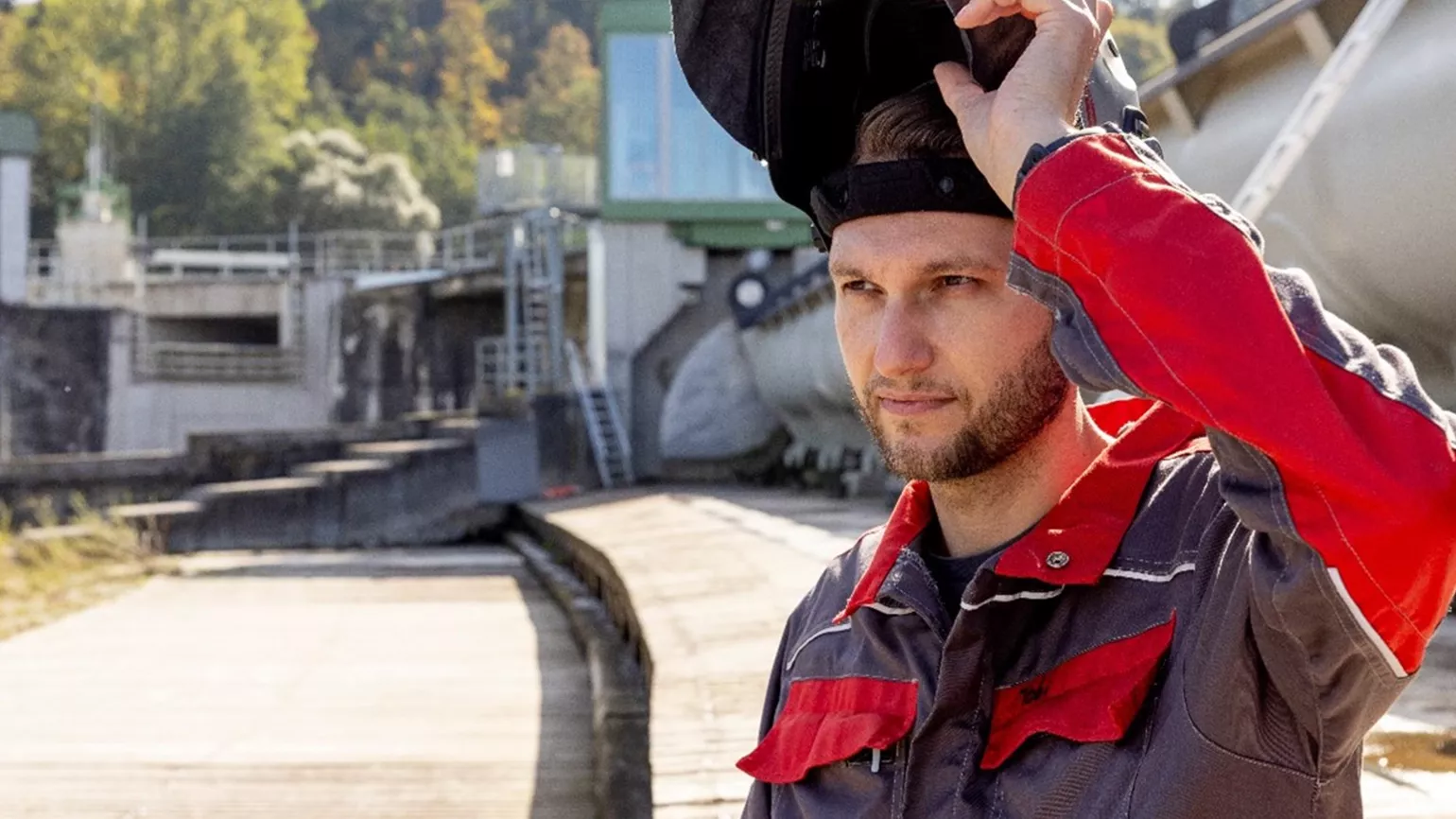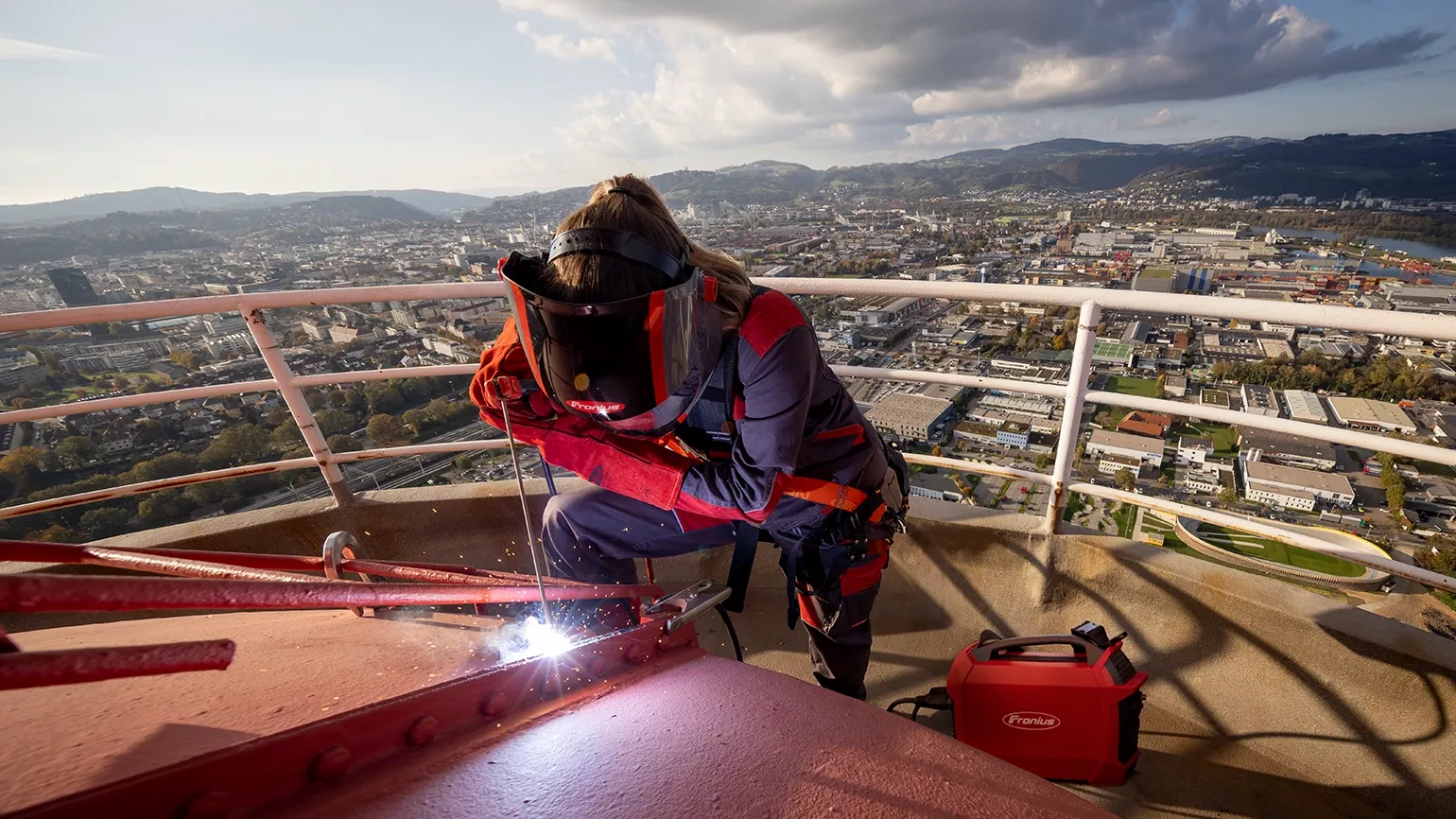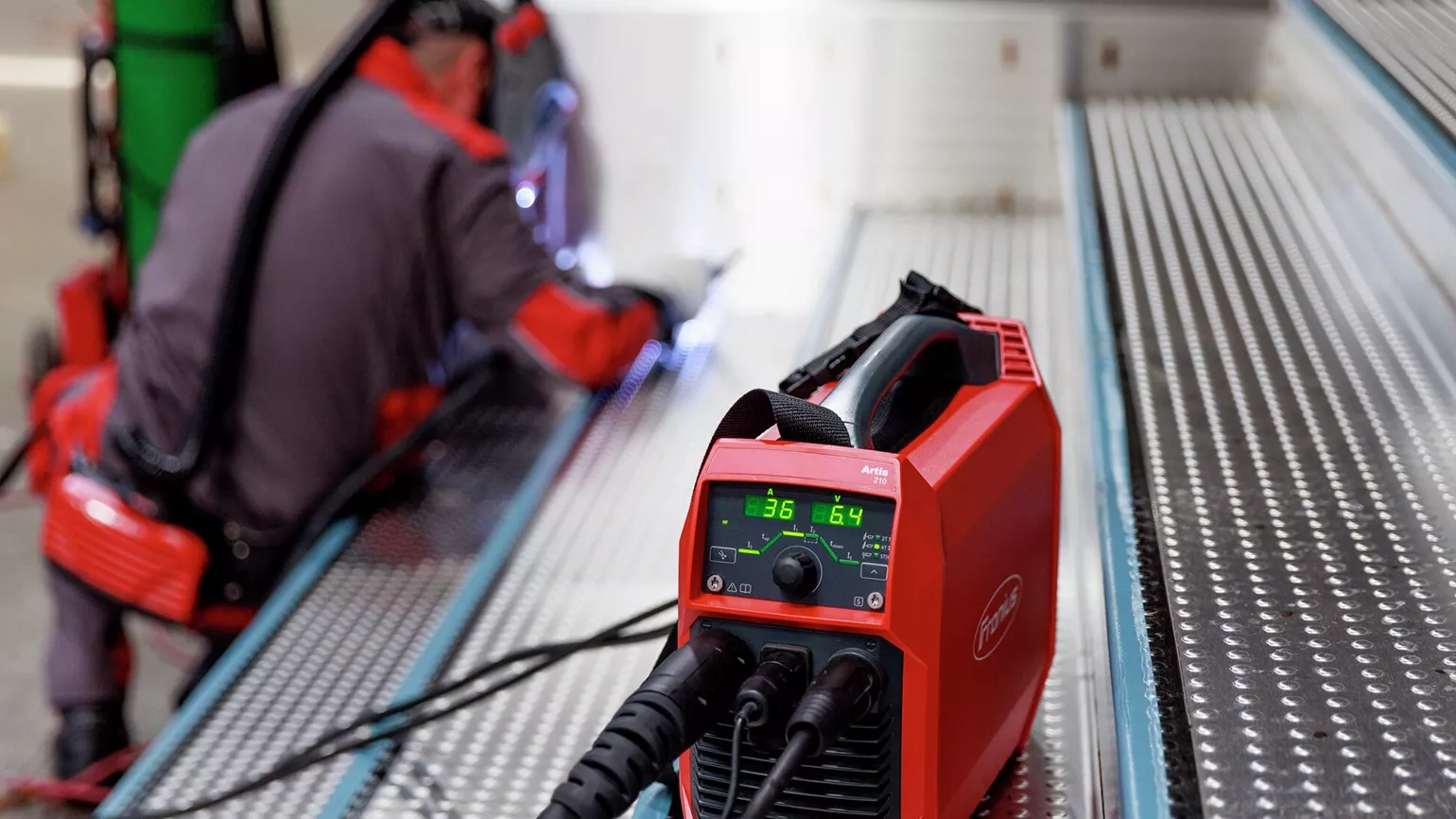Manual welding:
In a tight spot, people remain essential

Responsibility meets precision
“In
certain situations and at certain locations, you can only weld by hand. A good
example is the construction of highway bridges. Finished sections of roadway
are produced elsewhere and delivered to the site, but the individual sections
are joined together on site by manual welders. There are no automated processes
here. Responsibility therefore ultimately lies with the individual welding
specialist. That's why it is so important not just to have enough manual
welders going forward, but above all that welders should be highly skilled and
highly qualified," believes welding technology
expert Tobias Rieder, underlining that in complex situations––whether on a
bridge, a tower or repairs in the middle of a field––it all comes down to
people.

But what if the human factor is missing?
This is precisely the problem the welding
industry is currently facing. While the demands on the profession are
increasing, there are fewer people who can meet them. As a result, machines are
increasingly taking over tasks that used only to be carried out by experienced
welding specialists. An example is cobots, short for collaborative welding
robots: They are a way to mitigate the shortage of skilled workers, give
companies some breathing space, and relieve workers of repetitive and tiring
tasks. Automated welding systems are precise, efficient, and now
indispensable––or at least when conditions are ideal.
But when the requirements become more complex, they soon reach their limits. Confined spaces, unpredictable weather or individual repairs require maximum flexibility and care––precisely where manual welding comes into its own. Because it is people who make the difference, with their skill, intuition and experience, especially in extreme conditions.
The answer to the shortage of skilled workers in the field of manual welding is therefore not automation, but targeted support for welding specialists through sophisticated technology on site. After all, when work is easier, not only is it more efficient, it is also more enjoyable.
Targeted support in manual welding starts
with choosing the right machine. Modern welding machines play a key role here:
They reduce the workload for welders, ensure safety and enable precise work
even under difficult conditions. In addition to the experience, know-how and
dexterity of a welding specialist, you need a machine that is in no way
inferior to the skills of the user. In manual welding, people and technology
form a well-oiled team that delivers top performance even under pressure. Which
is why we are introducing three robust Fronius powerhouses, starting with the
Ignis Battery, which we will be presenting to the public for the first time at
this year's SCHWEISSEN & SCHNEIDEN in Essen.
No socket? Not a problem for the Ignis
Battery. This battery-operated machine comes into its own where there is no
power connection: on remote construction sites, exposed installations,
difficult-to-access altitudes or in the agricultural sector. Consider the
farmer in the scenario described at the beginning of this article who notices a
technical problem with his combine harvester in the middle of the harvest
season. Cordless technology and a high degree of portability mean the welding
work can be done directly in the field: quickly, reliably and independently.
With a weight of around 12 kg, the Ignis Battery can be transported to
situations such as this with ease.
But when the requirements become more complex, they soon reach their limits. Confined spaces, unpredictable weather or individual repairs require maximum flexibility and care––precisely where manual welding comes into its own. Because it is people who make the difference, with their skill, intuition and experience, especially in extreme conditions.
The answer to the shortage of skilled workers in the field of manual welding is therefore not automation, but targeted support for welding specialists through sophisticated technology on site. After all, when work is easier, not only is it more efficient, it is also more enjoyable.
Technology
that provides support precisely where it is needed
Targeted support in manual welding starts
with choosing the right machine. Modern welding machines play a key role here:
They reduce the workload for welders, ensure safety and enable precise work
even under difficult conditions. In addition to the experience, know-how and
dexterity of a welding specialist, you need a machine that is in no way
inferior to the skills of the user. In manual welding, people and technology
form a well-oiled team that delivers top performance even under pressure. Which
is why we are introducing three robust Fronius powerhouses, starting with the
Ignis Battery, which we will be presenting to the public for the first time at
this year's SCHWEISSEN & SCHNEIDEN in Essen.
Ignis
Battery: When mobility becomes a strength
No socket? Not a problem for the Ignis
Battery. This battery-operated machine comes into its own where there is no
power connection: on remote construction sites, exposed installations,
difficult-to-access altitudes or in the agricultural sector. Consider the
farmer in the scenario described at the beginning of this article who notices a
technical problem with his combine harvester in the middle of the harvest
season. Cordless technology and a high degree of portability mean the welding
work can be done directly in the field: quickly, reliably and independently.
With a weight of around 12 kg, the Ignis Battery can be transported to
situations such as this with ease.Quickly charged, immediately ready for use
The Ignis Battery boasts an impressive
charging speed: it is fully charged in just one hour and takes just 40 minutes
to reach 80 percent charge. This means that there is little to no impact on
your workflow. If there is still a small job to be done before the end of the
working day, for example if two electrodes need to be welded, a quick
five-minute charge is all it takes. And you're ready to carry on.
The integrated high-performance 750 Wh lithium-ion battery offers impressive staying power: Up to 30 minutes of TIG welding at 100 A or the welding of up to 31 electrodes (2.5 mm each) are possible with just one battery charge. Thanks to hybrid mode, you can weld and charge simultaneously. This extends the operating time and ensures maximum flexibility for mobile applications. And it offers a real leap forward when it comes to capacity: The new Ignis Battery has almost twice the capacity of its predecessor, the AccuPocket.
The integrated high-performance 750 Wh lithium-ion battery offers impressive staying power: Up to 30 minutes of TIG welding at 100 A or the welding of up to 31 electrodes (2.5 mm each) are possible with just one battery charge. Thanks to hybrid mode, you can weld and charge simultaneously. This extends the operating time and ensures maximum flexibility for mobile applications. And it offers a real leap forward when it comes to capacity: The new Ignis Battery has almost twice the capacity of its predecessor, the AccuPocket.

Ignis: The answer to adverse conditions
Dust, moisture, heat, cold: The Ignis excels in challenging circumstances. Welders are often exposed to harsh
environments, especially on construction sites, in workshops, in industry or on
farms––precisely where the Ignis comes into its own. Its compact design,
coupled with stable performance, makes it ideal for use in difficult
conditions. This is because the handy machine contains sophisticated technology
with a wide range of functions that make everyday welding work noticeably
easier.
But that’s not all the Ignis can do: With 250 amperes, it will enter a new performance class in fall 2025, and is therefore equipped for particularly demanding applications. It also now has the Easyjobs function on board, which enables welding specialists to call up recurring welding tasks conveniently and in a matter of seconds if required. Another highlight is the Favorites button. This allows you to add each function directly to the first menu level. Just press a button and your preferred setting is instantly applied. This saves time, reduces clicks and noticeably increases productivity.
But that’s not all the Ignis can do: With 250 amperes, it will enter a new performance class in fall 2025, and is therefore equipped for particularly demanding applications. It also now has the Easyjobs function on board, which enables welding specialists to call up recurring welding tasks conveniently and in a matter of seconds if required. Another highlight is the Favorites button. This allows you to add each function directly to the first menu level. Just press a button and your preferred setting is instantly applied. This saves time, reduces clicks and noticeably increases productivity.
Artis: Weld seams that speak volumes
The Fronius Artis lives up to its name, which is derived from the Latin “arte” for art.
Because TIG welding is not just about top quality, but also outstanding seam
appearance. Visible components in particular require millimeter-precise
execution, clean transitions and an attractive appearance.
Artis is particularly popular in medical technology, where hygienically perfect and smooth seams are required. But TIG weld seams are also often seen in the food industry, in railing construction and in swimming pools, where they also need to look good as well as last. Manual welders in these demanding areas particularly appreciate the Artis, not least because of its high-end TIG functions, which are otherwise only found in larger welding systems.
New: The Artis will also be available in the 300 power category next year, for even more scope for complex applications.
Artis is particularly popular in medical technology, where hygienically perfect and smooth seams are required. But TIG weld seams are also often seen in the food industry, in railing construction and in swimming pools, where they also need to look good as well as last. Manual welders in these demanding areas particularly appreciate the Artis, not least because of its high-end TIG functions, which are otherwise only found in larger welding systems.
New: The Artis will also be available in the 300 power category next year, for even more scope for complex applications.

Flexible manual welding, with technology that thinks for itself
Whether Artis, Ignis or Ignis
Battery––whether high up on a lighthouse or on the ground in a field: Wherever
improvisation is part of everyday life and conditions are challenging, you need
solutions you can rely on. Solutions that support the person behind the welding
machine in the most demanding locations. After all, in challenging environments
where there is no room for large machines, what matters most is flexibility.
And this is precisely where manual welding comes into its own. With their
sophisticated technology and robust design, the Fronius Artis, Ignis and Ignis
Battery help you to produce precise and reliable work. This turns challenging
manual work into a sense of achievement, and a welding machine into a real
partner for every day working life. The result is a team that performs at its
best even under pressure. For manual welding quality at the highest level.
How did the Ignis, Artis and Ignis Battery get their names––and why are they such a good fit, as if they were made for them? The answer can be found in our podcast episode – listen in!
Would you like to experience the Artis, Ignis or Ignis Battery first hand? Then stop by at SCHWEISSEN & SCHNEIDEN and take a closer look at these three powerhouses. We look forward to seeing you there!
How did the Ignis, Artis and Ignis Battery get their names––and why are they such a good fit, as if they were made for them? The answer can be found in our podcast episode – listen in!
Would you like to experience the Artis, Ignis or Ignis Battery first hand? Then stop by at SCHWEISSEN & SCHNEIDEN and take a closer look at these three powerhouses. We look forward to seeing you there!

